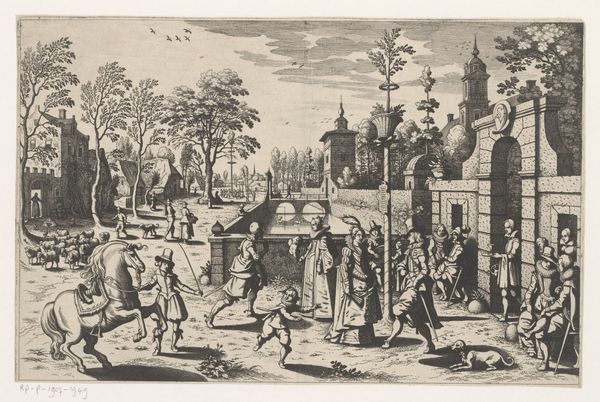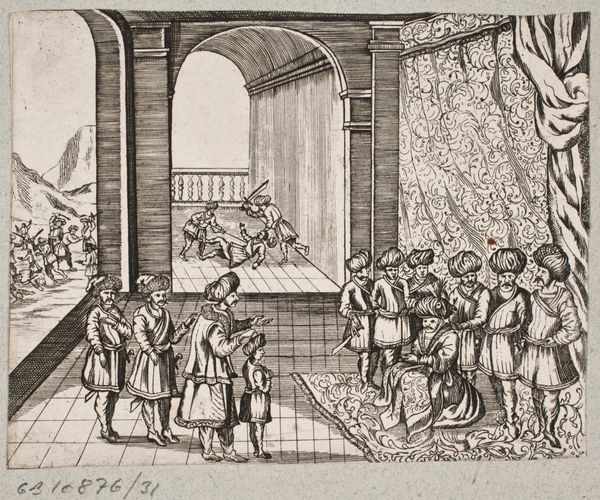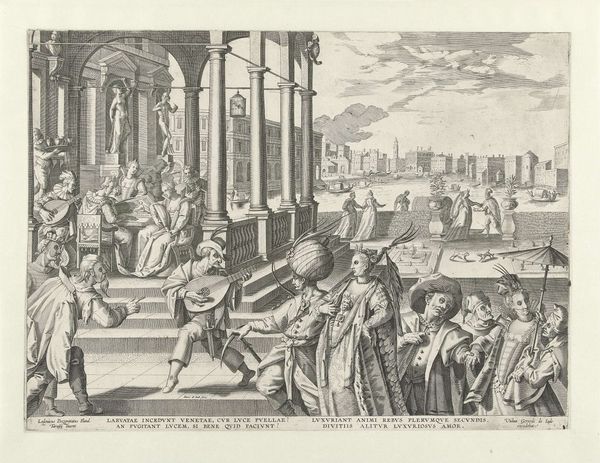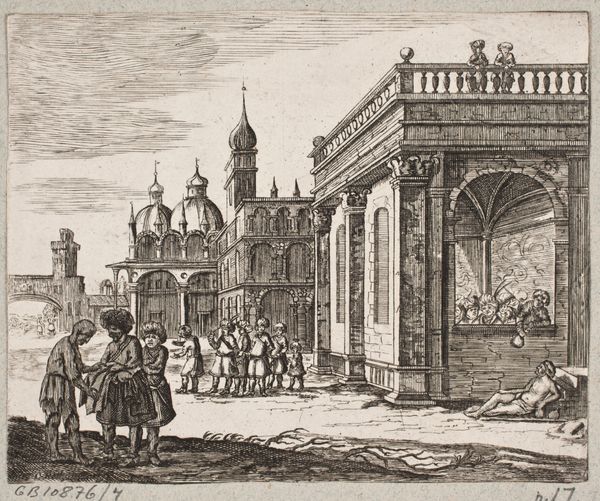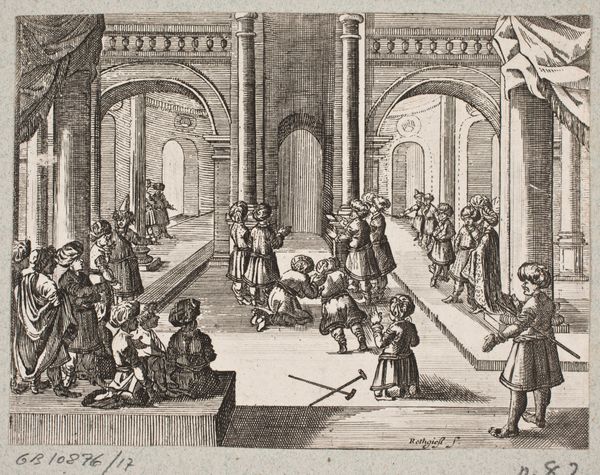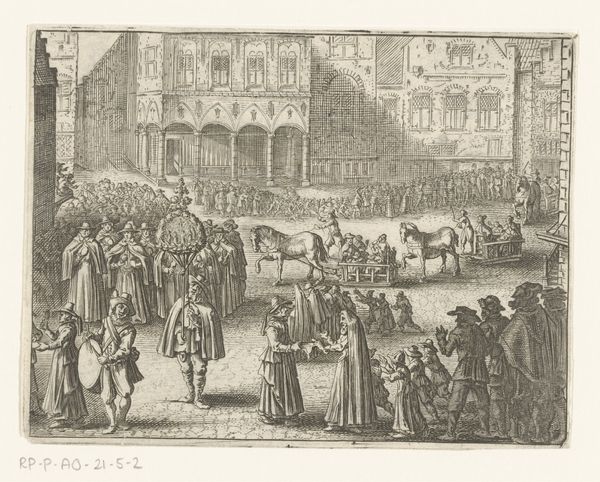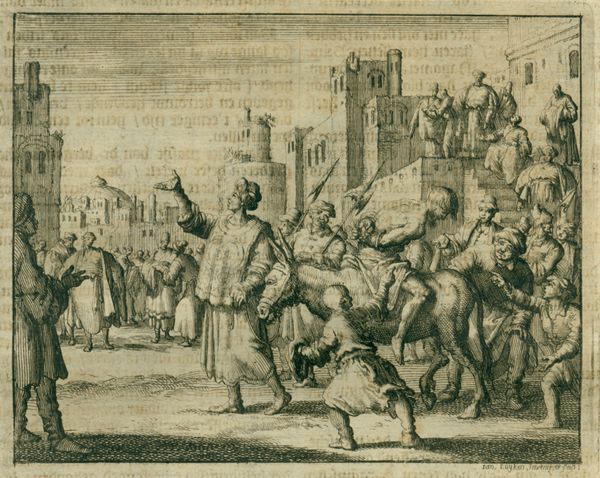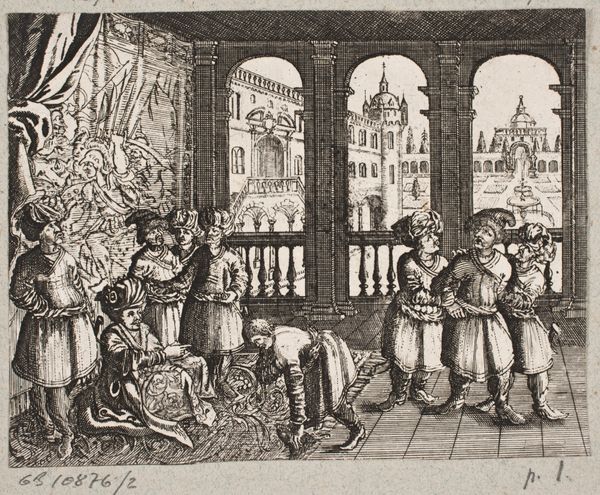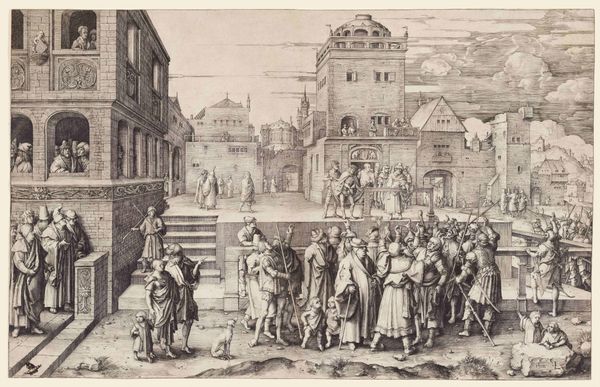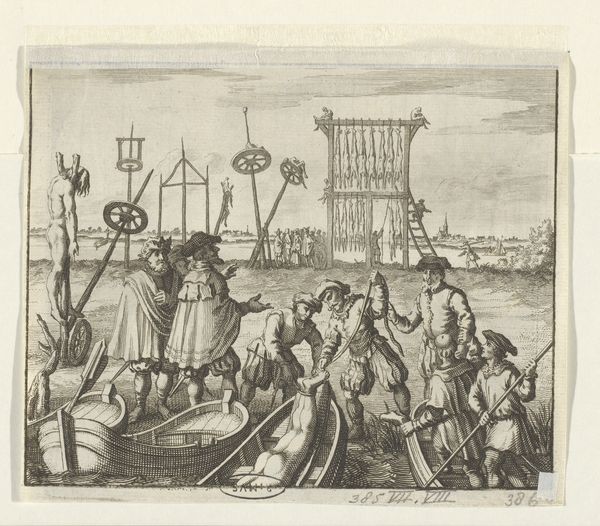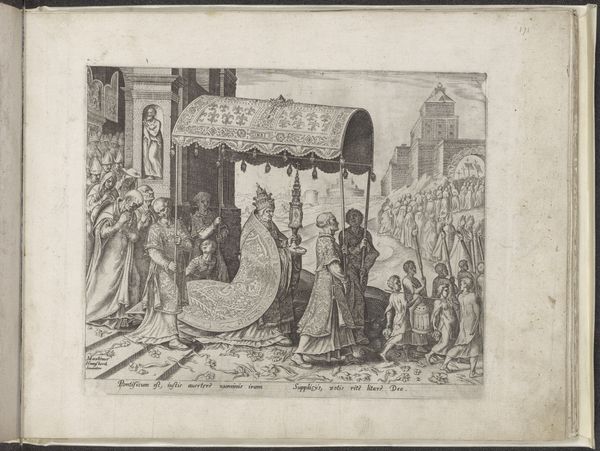![Illustration til Adam Olearius, “Persianischer Rosenthal von einem Sinnreichen Poeten Schich Saadi […]”, Schleswig 1660 by J. Muller](/_next/image?url=https%3A%2F%2Fd2w8kbdekdi1gv.cloudfront.net%2FeyJidWNrZXQiOiAiYXJ0ZXJhLWltYWdlcy1idWNrZXQiLCAia2V5IjogImFydHdvcmtzL2JlN2FjZWU2LWM3MDEtNDUyOS1iZmVjLTFjZjc0M2I2YWMyYi9iZTdhY2VlNi1jNzAxLTQ1MjktYmZlYy0xY2Y3NDNiNmFjMmJfZnVsbC5qcGciLCAiZWRpdHMiOiB7InJlc2l6ZSI6IHsid2lkdGgiOiAxOTIwLCAiaGVpZ2h0IjogMTkyMCwgImZpdCI6ICJpbnNpZGUifX19&w=3840&q=75)
Illustration til Adam Olearius, “Persianischer Rosenthal von einem Sinnreichen Poeten Schich Saadi […]”, Schleswig 1660 1660
0:00
0:00
print, engraving
#
baroque
# print
#
history-painting
#
engraving
Dimensions: 102 mm (height) x 135 mm (width) (bladmaal)
Editor: Here we have a 17th-century engraving by J. Muller, illustrating Adam Olearius’s book on Persia. It’s incredibly detailed for its size, a real peek into how Europeans imagined the East. What first strikes me is the contrast between the lively figures and the almost dreamlike cityscape in the background. What do you see in this piece? Curator: Immediately, I'm drawn to the symbolic weight embedded in the architecture and costuming. Look at the figures bestowing the crown; this simple act is heavy with the memory of empires, the cyclical rise and fall represented visually through architectural symbols. Do you notice how the artist has rendered the figures? Editor: I see the sharp lines emphasizing their clothes and faces, they almost seem like caricatures. Curator: Exactly! That’s no accident. The artist likely aimed to convey a particular interpretation, possibly colored by then-contemporary European perceptions and stereotypes. How does the background, the depiction of the "Persian" city, influence your understanding? Editor: The cityscape, while detailed, feels a little fantastical, not quite real. Maybe that's intentional, feeding into those stereotypes. Curator: Precisely! It serves as a visual shorthand, activating a cultural memory, whether accurate or skewed, in the viewer’s mind. Notice the archway to the left too, mirroring the arc of the figures’ arms and the implied reach of their culture's power, connecting and containing. It seems that it could convey transition but also control of trade and access routes, which also becomes apparent due to the character with a cane seeming to guide a smaller group of figures. This engraving becomes a study in power, both visual and cultural. Editor: I see it now – the details, the composition, even the technique itself contribute to how this image communicated ideas about power and otherness. Curator: Indeed. It's amazing to recognize how an illustration that seems merely descriptive is, in fact, such a complex articulation of cultural ideas and assumptions.
Comments
No comments
Be the first to comment and join the conversation on the ultimate creative platform.
